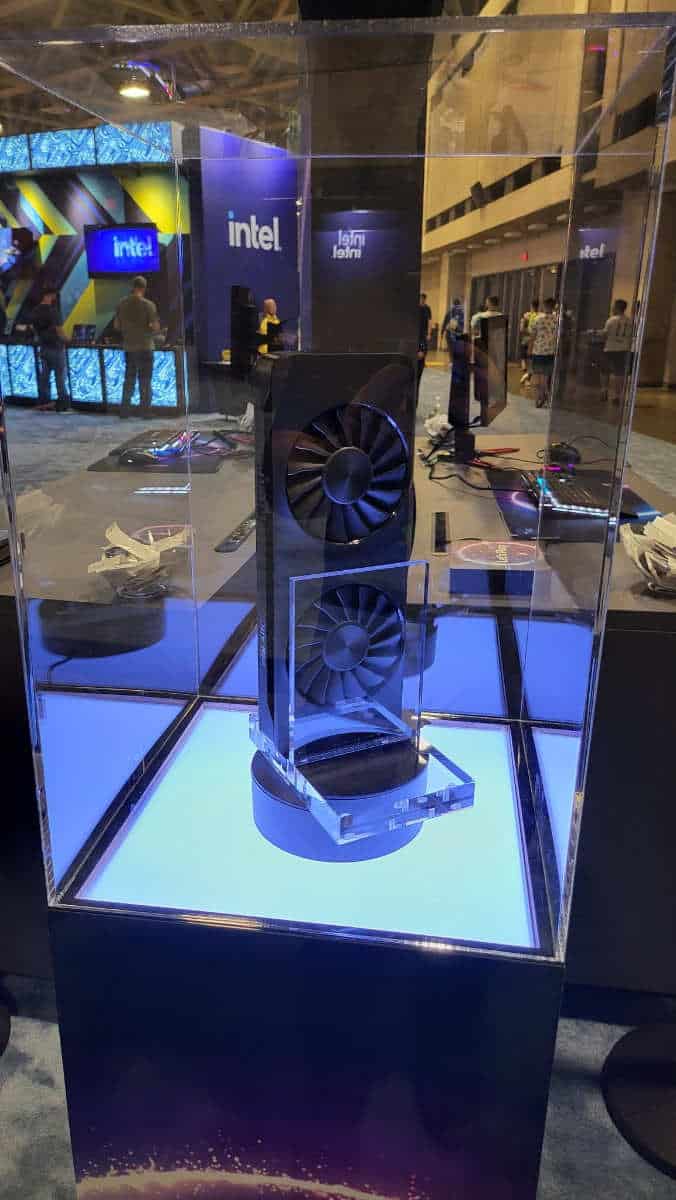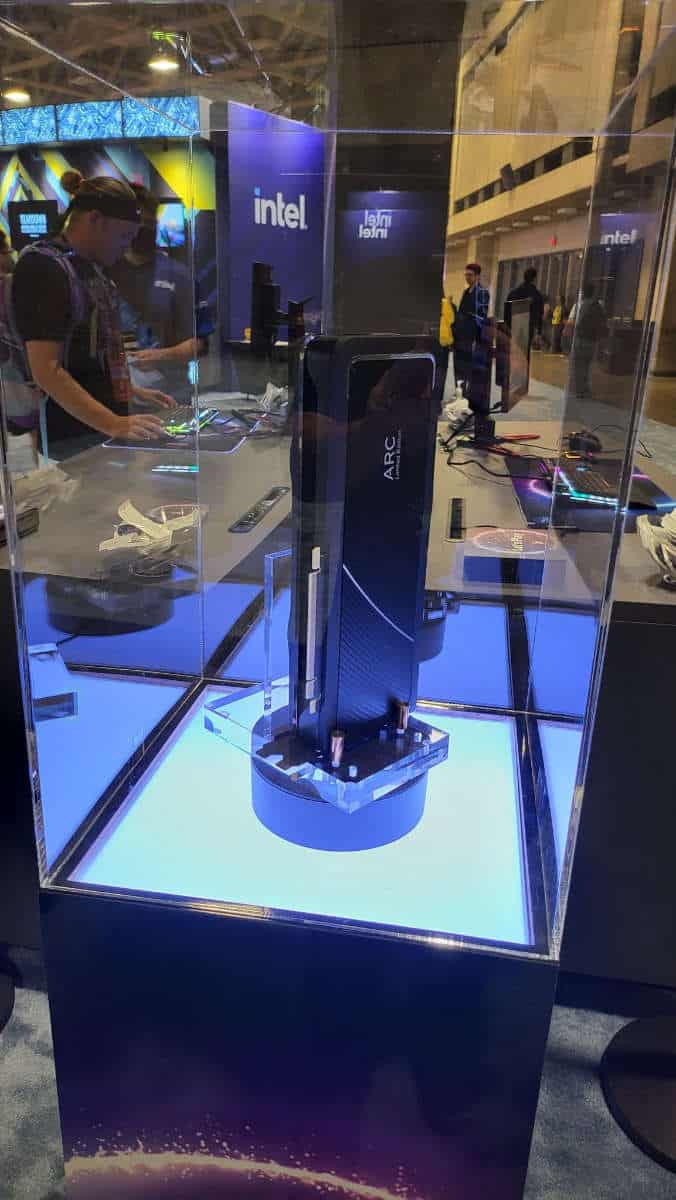
Last Updated:
If you’re not aware, Intel sponsors a series of tournaments for CS:GO and Starcraft II. The recent IEM Dallas CS:GO tournament was held in Dallas, hosting the final of Ence vs the recent roster of Cloud 9, and Intel had something to show off whilst there. On the show floor, it displayed one of its upcoming Intel ARC Alchemist graphics cards. The specific model that was on show was not given but the dual fan model is likely based upon the Alchemist ACM-G10 GPU. Either an Arc A770 or rumored A780 model.
From the current announcements and rumors, we expect the new GPUs to be launching in the Summer period. A recent community post suggests it will be the entry-level series that will come out first and only for Chinese OEMs. The design has only been previously teased on video and with all these delays it was hard to believe we would see them in the wild for a long time. Especially since they are limited edition models so it will rely on partners to create a bigger offering.
Intel Arc graphics card specifications
The limited-edition card shown is likely based on the Alchemist ACM-G10 GPU with a full 32 Xe-core configuration. Either the Arc A770 or A780 comes with a 16 GB GDDR6 memory configuration. Whilst requiring 8-pin and 6-pin power connectors to run. The Intel flagship is expected to run against the RX 6700 XT and RTX 3070 in terms of performance.
If it’s either the A770 or 780 there is a slight variation on what their build may be. However, the GPU die is rumored to be the same as the ACM-G10 made with TSMCs 6nm processes, with 21.7 billion transistors creating a 406mm² die. The generation supposedly still uses PCIe 4.0 x16. Whilst they vary on the memory speeds. With the 780 using GDDR6X compared to standard slower GDDR6 as well as 256-bit memory bus. It does have a better bandwidth of 559.6 GB/s instead of 384.0 GB/s.
The render config set for the graphics cards is 4,096 shading units, 256 TMUs, 128 ROPs, 512 execution units, 32 RT cores, and 16 MB L2 cache. Both supposedly have a base clock of 300 MHz, with the flagship sporting the higher boost clock of 2,200 MHz compared to 1,650 MHz. Offering faster speeds and likely performance, and requires a higher PSU of 550 W instead of 300 W.








